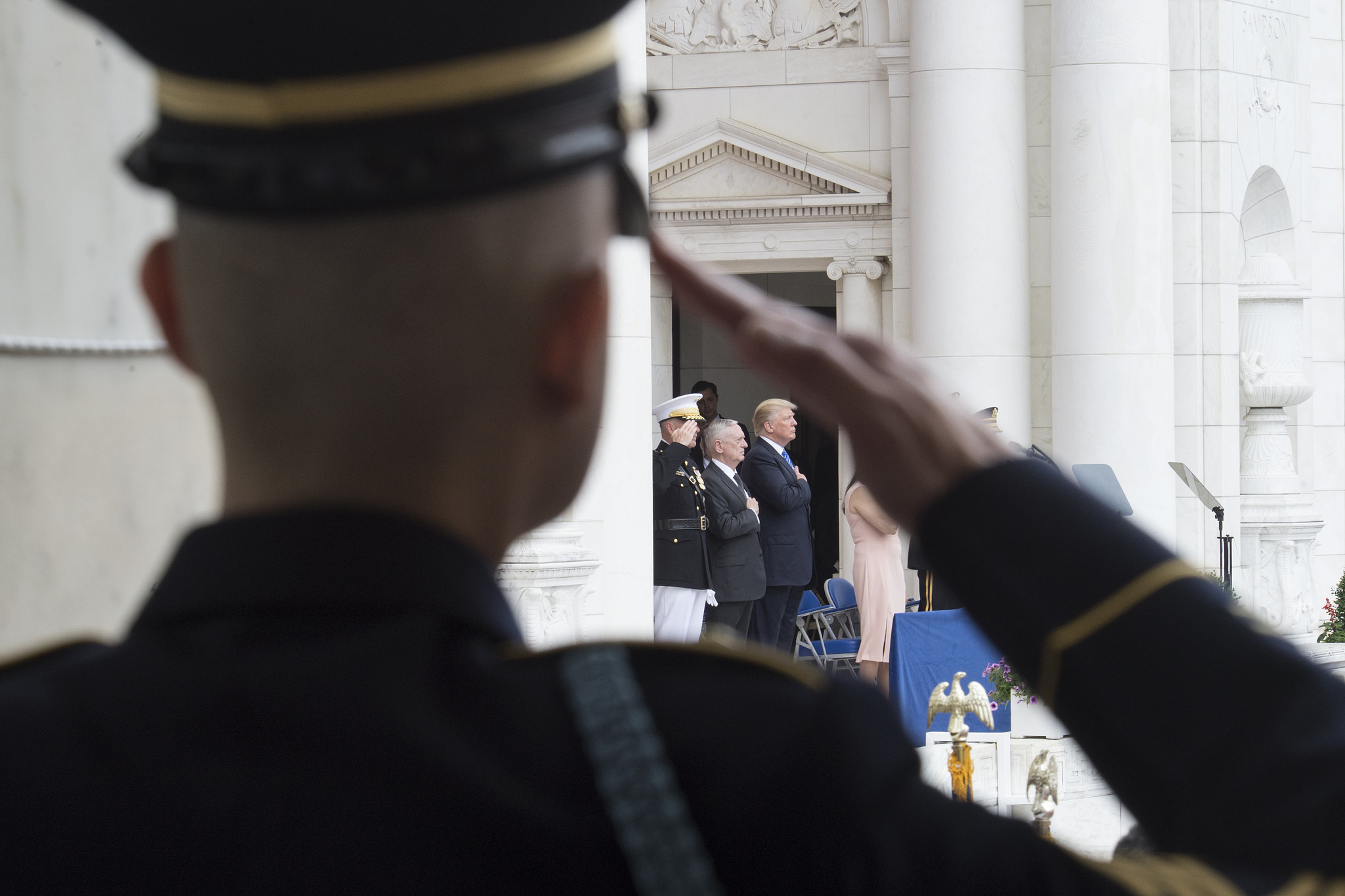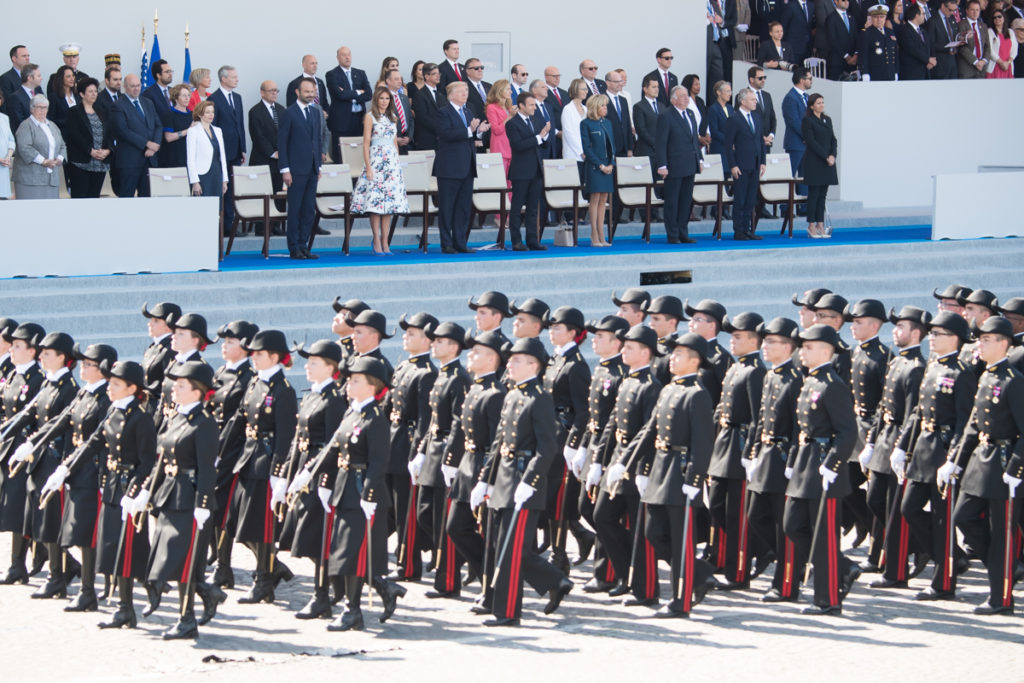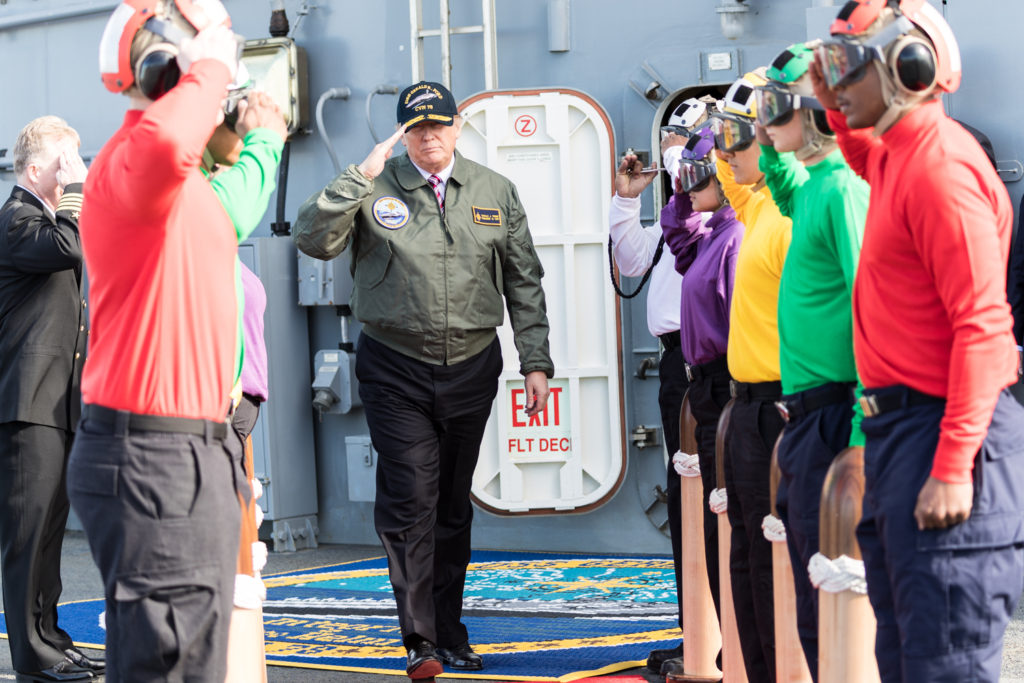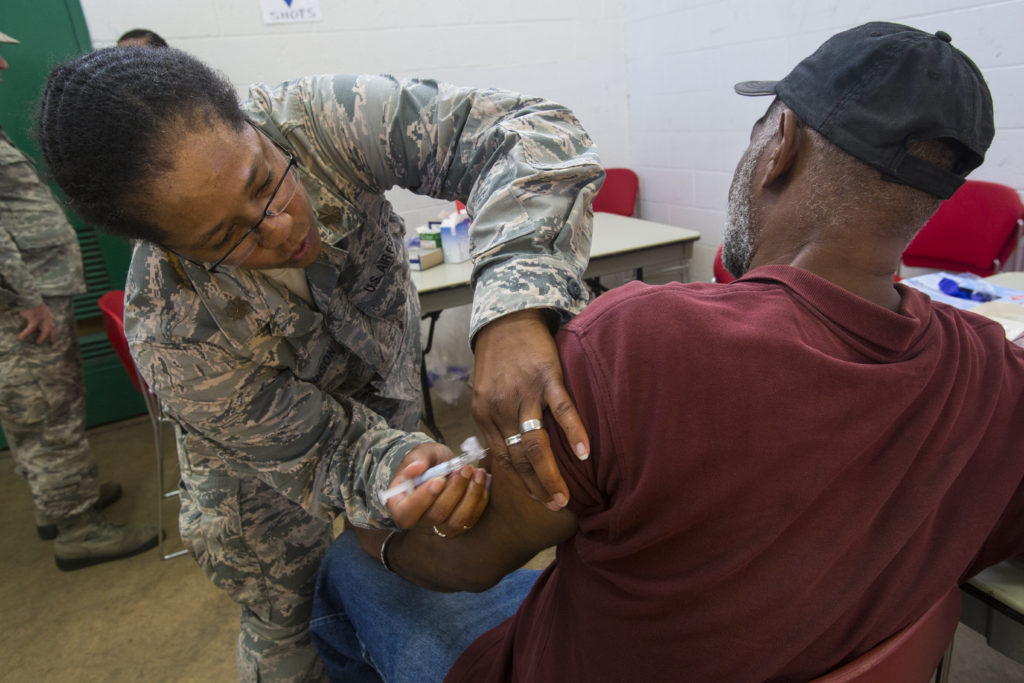Wannabe Commander-in-Chief: Trump is Failing U.S. Veterans
 https://flic.kr/p/ZTk7jC
https://flic.kr/p/ZTk7jC
This past July, President Donald Trump and First Lady Melania Trump were invited by French President Emmanuel Macron to attend Bastille Day celebrations, which included a military parade. Trump was highly impressed with the event, declaring: “It was one of the greatest parades I have ever seen.” He then expressed his desire for a similar parade in the United States on Fourth of July, even stating he would “try and top” the French parade. Trump reportedly discussed the idea of a military parade with his chief of staff John Kelly (himself a retired General), but did not go into any further details at the time, and the proposal of a parade did not gather much media coverage.

That is until The Washington Post revealed in early February that Donald Trump had officially notified the Pentagon that he wanted a military parade. Pentagon spokesman Charlie Summers confirmed the request, and added that the Department of Defense was currently reviewing potential dates for the parade. Press Secretary Sarah Huckabee Sanders stated that President Trump had “asked the Department of Defense to explore a celebration at which all Americans can show their appreciation” because he is “incredibly supportive of America’s great service members who risk their lives every day to keep our country safe.” According to a military official present at the meeting, Trump asked for a parade “like the one in France”, and the President’s request is “being worked at the highest levels of the military.” The high-ranking officials that attended the meeting where Trump requested the parade include Vice President Mike Pence, Kelly, Defense Secretary James Mattis (also a former general) and Chairman of the Joint Chiefs Gen. Joseph Dunford.
Americans adore and glorify the U.S military almost to the point of omnibenevolence. According to a 2017 Gallup poll, more than three in four Americans have a favourable opinion of the five branches of the military (Army, Navy, Air Force, Marines and Coast Guard). Similarly, a Pew Research Centre study from 2016 revealed that more than three-quarters of Americans believe the military acts “in the best interests of the public.”
However, despite Trump’s enthusiasm for a full-blown display of American military strength and America’s obvious affection for its military, the public backlash following the announcement of a parade was immediate. While some, like Senator Lindsey Graham (R-SC), would be in favour of a parade honouring veterans and their loved ones, few have expressed interest in what Graham called a “Soviet hardware display”. Senator John Kennedy (R-LA) also dismissed the idea of a parade, claiming that “Confidence is silent. Insecurities are loud.”, while Senator Ben Cardin (D-MD) stated that a parade was not necessary as it would be a waste of U.S military resources. The general public also disapproves of the parade. A Quinnipiac University Poll in late February revealed that 61% of Americans object to a military parade, and a staggering 75% say that it would not be a good use of public funds.

The military itself does not seem to be thrilled with the idea of a parade, mostly because of the complicated logistics associated with it. If the parade ends up looking similar to the French one, “thousands of troops, armored vehicles, missiles and other heavy weapons” will have to be moved to Washington, D.C. Many defence officials fear this would disrupt military training schedules. Furthermore, a military officer remarked that “we don’t have troops and units sitting around waiting to do a parade.” Given that Donald Trump has never served in the U.S military, it is highly plausible he does not know the actual implications of a military parade.
On February 20th, an unclassified memo written by Trump’s National Security Adviser H.R. McMaster (another former general) regarding the parade was released. It included a potential date (Veterans’ Day) and more logistical details. Therefore, despite the general public opposition, the Trump administration will move forward with the parade, which is estimated to cost anywhere between $10 and $30 million dollars. Defense Secretary James Mattis claims that Trump wants a parade because of his “affection and respect for the military”. However, if Trump truly supports the U.S military, he might want to invest money elsewhere: in veteran affairs.
Forgotten Heroes
At first glance, the veteran situation seems to be improving in the United States, at least in regards to employment. According to the Bureau of Labor Statistics, the annual veteran unemployment rate has steadily fallen since 2010. For the post-9/11 class of veterans, a demographic that historically has had higher unemployment rates than the national average and veterans overall, the unemployment rate has gone down from 12.1% in 2011 to 5.1% in 2016. However, while more veterans than before are employed, many are underemployed, especially those in the post-9/11 demographic. Veterans face major challenges when transitioning back into civilian life, which translates into a struggle to find decent employment. There are usually communication barriers between veterans and civilian employers, because the military and civilian workforce have different cultures. Therefore, it can be hard for veterans to sell their skills and expertise in ways that meet the expectations of civilian employers, while civilian employers can struggle to understand “how a veteran candidate’s experience can translate to their workplace.” Low-self esteem is also a barrier. According to Jaynine Howard, a veteran herself and career strategist, veterans go from “being in leadership positions and being known for your expertise” while in the army to “another average person in the sea of many” when they transition to civilian life.
There are many organizations that help veterans find employment, including the Call of Duty Endowment and Hire Heroes USA, and the Department of Veteran Affairs also runs two initiatives to employ more veterans: VA for Vets and Feds Hire Vets. However, while there has been an improvement over the last few years, veterans are still struggling to find jobs, and especially jobs they are qualified for. Money for a potential parade would be better invested helping veterans in the job market.
Unemployment is far from the only major issue faced by U.S veterans. According to a 2017 study by the Department of Veteran Affairs, “risk for suicide is 22% higher among Veterans when compared to U.S. non-Veteran adults”, when controlling for age and sex. After the report came out, Veteran Affairs Secretary David Shulkin said the findings were “deeply concerning”. Out of the 20 veterans who commit suicide per day (on average), only six are users of the Veteran Affairs services. Shulkin promised to reduce the number of suicides “through support and education.” Furthermore, the study revealed that the suicide rate is higher in certain states, most prominently New Mexico, Nevada, Utah and Montana. In those states, veterans often have to drive more than 70 miles to have access to a VA medical centre. The study also reported that female and older veterans are more at risk than other veterans when compared to their civilian counterparts.
During his Presidential campaign, Donald Trump made veteran health care a priority: “We are going to make sure every veteran in America has the choice to seek care at the Veterans Administration or to seek private medical care paid for by our government.” His first budget included 3.5% increase in funding for the VA, and he signed a bipartisan bill that expands the Veterans Choice Program (which allows veterans to seek private care). However, not all veterans are eligible to receive healthcare through a publicly funded program. There are priority groups, that prioritize veterans whose health issues are directly related to their military service. The “financially well-off veterans with no service-related claim” end up at the bottom of the list. Furthermore, it is estimated that up to 7 million veterans are not eligible for the programs. Therefore, while Trump has promised to ensure that “every veteran” receives health care, it is not the case right now. There is no doubt the $10 to $30 million that will go towards the parade could instead provide more veterans with healthcare.
Another major issue plaguing the U.S veteran population is homelessness. It is estimated that while veterans account for around 7% of the population, they make up for 12% of the adult homeless population. Nine out of ten homeless veterans are male, and a majority are “single, live in urban areas and suffer from mental illness, physical disability or substance abuse.” Around half of the homeless veterans served during the Vietnam War. While African Americans and Hispanics account for 10% of the veteran population, they make up for 40% of the veteran homeless population. Many soldiers return “scarred by war”, and consequently suffer from Post Traumatic Stress Disorder (PTSD). They struggle to adjust back to civilian life, which can lead to substance abuse, and later homelessness.

Like veteran unemployment, there has been a sharp decrease in the number of homeless veterans. In fact, it is estimated that the number of homeless veterans has dropped by 56% from 2010 to 2016. Many federal programs have been implemented to help homeless veterans. They can receive assistance from both the VA and the Department of Housing and Urban Development (HUD) through housing vouchers. In 2012, the VA introduced the Supportive Services for Veteran Families (SSVF) program, “with the parallel goals of both preventing veteran homelessness and rapidly re-housing veterans and veteran families who do fall into homelessness.” Both programs have been successful, given the drop in homeless veterans. However, only three states (Virginia, Connecticut, and Delaware), “have “effectively ended” homelessness among the veteran population”, which means there is still a lot of work to be done. It is important for the federal government to make good use of its resources to help struggling veterans.
Donald Trump claims that a military parade would be “something great for the spirit of the country”, and that the military “loves the idea.” However noble his intentions might be, a parade is not what the U.S military, and especially veterans, needs at the moment. The potential parade could delay important training sessions and could be a logistical nightmare for the military. Furthermore, a parade would do nothing to improve veteran employment rate, and lower the veteran suicide and homelessness rates. James Mattis claims that Trump has “affection and respect for the military.” By funding more programs to improve veterans’ lives instead of spending millions of dollars on a parade, Trump could prove him right.
Edited by Sarie Khalid
